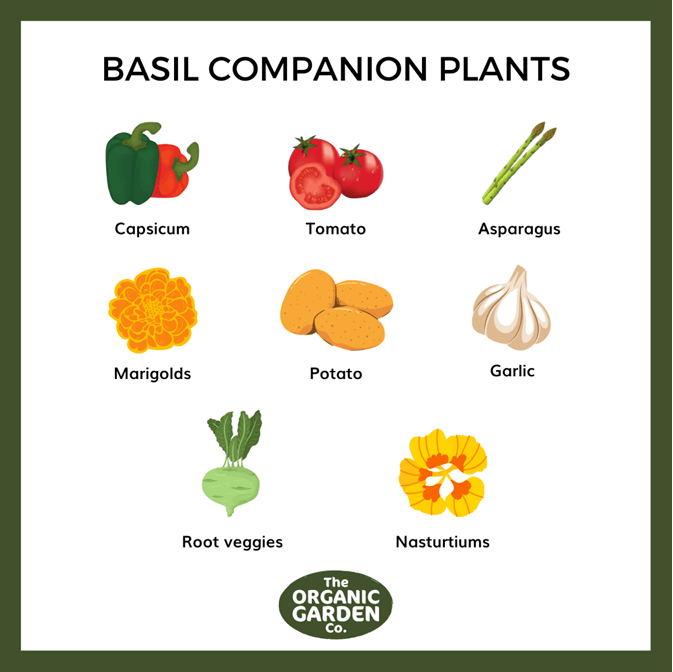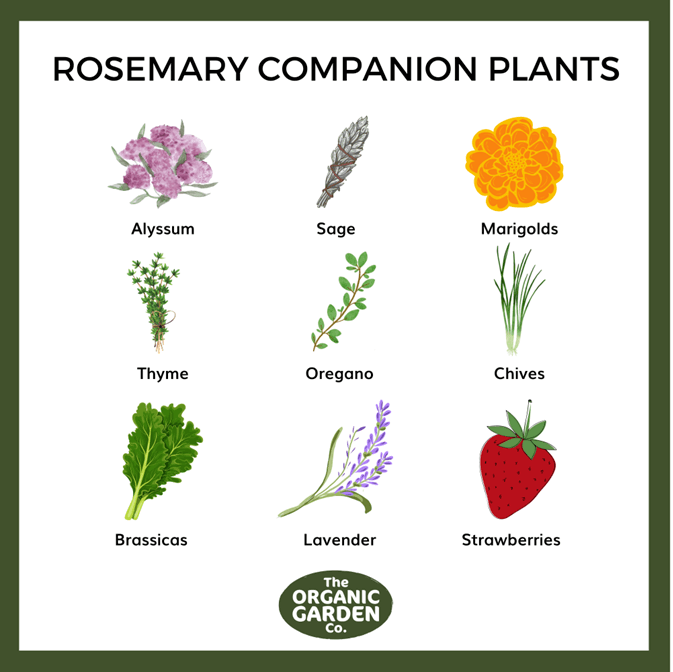The Ultimate Guide To Coplanting Herbs
The Ultimate Guide to Companion Planting Herbs
Herbs are a great way to add flavor and variety to your cooking, but they can also be beneficial for your garden. Companion planting is a gardening technique that involves planting certain herbs together to enhance each other's growth and productivity. By understanding which herbs complement each other, you can create a herb garden that is both beautiful and productive.
In this guide, we will discuss the basics of companion planting herbs, including:
- The benefits of companion planting
- How to choose the right herbs to plant together
- Some of the most popular companion planting combinations
- Tips for companion planting in containers
Benefits of Companion Planting Herbs
There are many benefits to companion planting herbs. Some of the most common benefits include:
- Improved growth and productivity: When herbs are planted together, they can help each other to grow better and produce more. This is because they can share nutrients, water, and sunlight more efficiently.
- Disease and pest control: Some herbs have natural pest-repelling properties. By planting these herbs near other plants, you can help to protect them from pests and diseases.
- Attract pollinators: Many herbs attract pollinators, such as bees and butterflies. These pollinators are essential for a healthy garden, as they help to pollinate flowers and plants.
- Improved flavor: Some herbs can actually enhance the flavor of other herbs when they are planted together. For example, basil can improve the flavor of tomatoes, and mint can improve the flavor of strawberries.
How to Choose the Right Herbs to Plant Together
When choosing herbs to plant together, there are a few things to keep in mind. First, you need to consider the plants' growing conditions. Some herbs prefer full sun, while others prefer partial shade. Some herbs need well-drained soil, while others are more tolerant of soggy soil.
Second, you need to consider the plants' complementary properties. Some herbs can help to repel pests, while others can help to attract pollinators. Some herbs can improve the flavor of other herbs.
Once you have considered these factors, you can start to put together your herb garden plan. There are many resources available online and in gardening books that can help you to find the best companion planting combinations.
Some Popular Companion Planting Combinations
Here are a few of the most popular companion planting combinations for herbs:
- Basil and tomatoes: Basil helps to repel tomato hornworms and other pests, and it can also improve the flavor of tomatoes.
- Chives and roses: Chives help to repel aphids and other pests, and they can also improve the drainage around roses.
- Dill and carrots: Dill helps to attract beneficial insects that help to control pests, and it can also improve the flavor of carrots.
- Lavender and beans: Lavender helps to repel beetles and other pests, and it can also attract pollinators.
- Marigolds and tomatoes: Marigolds help to repel nematodes and other pests, and they can also improve the drainage around tomatoes.
Tips for Companion Planting in Containers
If you are growing herbs in containers, there are a few things you can do to maximize the benefits of companion planting. First, choose containers that are the right size for the plants you are growing. Herbs need different amounts of space, so make sure to choose containers that are large enough for your plants to grow and spread.
Second, plant herbs that have similar water and sunlight requirements together. This will help to ensure that all of your plants get the resources they need to thrive.
Finally, consider the complementary properties of the herbs you are planting. If you are growing herbs for their culinary uses, plant herbs that will complement each other's flavors. If you are growing herbs for their pest-repelling properties, plant herbs that will help to protect each other from pests.
Conclusion
Companion planting is a great way to improve the growth, productivity, and pest-resistance of your herb garden. By understanding which herbs complement each other, you can create a herb garden that is both beautiful and productive.
Companion planting is a gardening technique that involves planting certain plants near each other to benefit each other's growth and health. This can be a great way to save space in your garden, attract beneficial insects, and repel pests.
When it comes to herbs, there are many different companion planting combinations that you can try. Some popular pairings include:
- Basil and tomatoes: Basil helps to improve the flavor and growth of tomatoes.
- Chives and carrots: Chives help to repel carrot flies.
- Mint and cabbage: Mint helps to repel cabbage moths.
- Oregano and roses: Oregano helps to repel aphids.
- Parsley and beans: Parsley helps to improve the nitrogen content of the soil, which benefits beans.
- Rosemary and lavender: Rosemary and lavender both attract beneficial insects.
Of course, not all herbs get along. Some herbs that should not be planted together include:
- Fennel and cilantro: These herbs are incredibly competitive and will stunt each other's growth.
- Rue, sage, and basil: These herbs can all damage each other by inhibiting each other's growth.
- Dill and lavender: Dill prefers acidic soil, while lavender prefers alkaline soil.
If you're interested in learning more about companion planting herbs, I recommend visiting Gardenia Inspiration. This website has a comprehensive guide to companion planting, including a list of recommended herb pairings and a list of herbs that should not be planted together.
FAQ of co planting herbs
- What are the benefits of co planting herbs?
Co planting herbs can offer a number of benefits, including:
- Attracting beneficial insects: Some herbs, such as basil, chives, and lavender, attract beneficial insects such as ladybugs and bees, which can help to control pests in your garden.
- Reducing pest problems: Other herbs, such as mint, rosemary, and sage, have strong scents that can repel pests, such as aphids, mosquitoes, and rodents.
- Improving plant growth: Some herbs, such as basil and parsley, can help to improve the growth and flavor of other plants.
- Completing the nutrient cycle: Different herbs have different nutrient needs, so co planting them can help to ensure that your plants are getting the nutrients they need to thrive.
- Creating a more visually appealing garden: Co planting herbs of different colors, shapes, and heights can create a more visually appealing garden.
- What are some good herbs to co plant together?
There are many different herbs that can be co planted together, but some of the most popular combinations include:
- Basil and tomatoes: Basil is known to improve the flavor of tomatoes, and it also helps to repel aphids.
- Chives and carrots: Chives help to repel carrot flies, and they also improve the flavor of carrots.
- Lavender and roses: Lavender helps to repel aphids and other pests, and it also helps to improve the fragrance of roses.
- Mint and beans: Mint helps to repel aphids and other pests, and it also helps to improve the growth of beans.
- Oregano and peppers: Oregano helps to repel pests such as spider mites and whiteflies, and it also helps to improve the flavor of peppers.
- How far apart should herbs be planted?
The spacing requirements for herbs will vary depending on the type of herb and the size of the mature plant. However, as a general rule of thumb, herbs should be spaced at least 6 inches apart. If you are planting herbs in rows, the rows should be at least 12 inches apart.
- How much sunlight do herbs need?
The amount of sunlight that herbs need will vary depending on the type of herb. However, most herbs need at least 6 hours of sunlight per day. If you are planting herbs in a shady spot, you may need to choose herbs that are specifically suited for shade.
- How much water do herbs need?
The amount of water that herbs need will vary depending on the type of herb and the climate in which you live. However, most herbs need to be watered regularly, especially during hot, dry weather. You should water your herbs deeply, so that the water reaches the roots.
Image of co planting herbs
- Basil and tomatoes. Basil and tomatoes are a classic combination that is often planted together. Basil helps to deter pests from tomatoes, and tomatoes provide the support that basil needs to grow.

- Mint and strawberries. Mint and strawberries are another popular combination. Mint helps to keep the soil moist and cool, which strawberries need to thrive.

- Chives and carrots. Chives and carrots are a good companion planting because they have different nutrient needs. Chives are heavy feeders, while carrots are light feeders. This means that they will not compete for nutrients and can both thrive in the same space.

- Lavender and rosemary. Lavender and rosemary are both Mediterranean herbs that prefer full sun and well-drained soil. They can be planted together in a pot or in the ground.

- Thyme and oregano. Thyme and oregano are both low-maintenance herbs that can be planted together in a pot or in the ground. They both prefer full sun and well-drained soil.

Post a Comment for "The Ultimate Guide To Coplanting Herbs"